Rachel Machi Wagoner heads the California’s Department of Resources Recycling and Recovery, better known as CalRecycle, so of course her focus is the environment. But what you may not expect is how passionate she has long been to this work, which began at the age of 22.
Her first job out of college was for then Senator Mike Thompson in his district office in Eureka, where the goal was to balance the Green Party City Council to the north in Arcata and the all-Republican city council to the south in Fortuna. “It was also at the time that Julia Butterfly was sitting in a redwood tree fighting for the redwoods,” Wagoner recalls.
From that unique start, she went on to work for a variety of elected officials, all of whom were committed, she says, to protecting the planet while also building the state economy and supporting innovation. “It’s a false narrative,” she says, that being an environmentalist means sacrifice on either a personal or state level. “California is proof of this, we can succeed and live an incredible lifestyle while preserving and protecting our environment.”
In fact, her resume includes Chief Consultant for the California State Senate Committee on Environmental Quality, Deputy Legislative Secretary in the Office of the Governor, and finally appointed director of CalRecycle by Governor Gavin Newsom in 2020.
CalRecycle has a staff of 900 who work to bring together the state’s recycling and waste management programs. How’s your experience been running the agency and what are some of your major objectives?
I love this job. By the end of this year, we’ll have almost 1,000 employees at CalRecycle. I came to this job because of Governor Newsom, who, when he was mayor of San Francisco, put in place the Zero Waste Plan for San Francisco. A lot of people don’t know this about him, but waste policy is one of the things he cares a lot about.
We’d be in legislative meetings about a bill on waste and recycling, waste reduction, or extended producer responsibility, and we’d have this really involved conversation about that legislation. These conversations led to the conclusion that we need a Zero Waste Plan for California, we need to be doing more, we need to be doing better, we need to build the circular economy for the state—and I came over here to do that.
I absolutely love it because I have a staff full of people who are committed to our mission. And shortly after I came on board, we adopted a new mission statement: ‘Protecting California’s environment and climate for the health and prosperity of future generations through the reduction, reuse and recycling of California resources, environmental education, disaster recovery and the transition from a disposable to a fully circular economy.’ That’s my job, I have the best job. I’m so excited every day to do it.
One of the big topics right now is the ambitious goals of 1383. How is that going?
You’re right, it is ambitious. When the legislature set about to make these reductions, and this legislation passed, I was in the legislature working for the Senate Environmental Committee. So it’s an incredible honor to be on the back end now helping to implement it.
I think it’s going really well. What we have achieved to date I am so incredibly impressed with, despite the fact that our state government, local governments, and federal government experienced a real shift with the pandemic—having to work from home, the economic uncertainty, and what that does to government. We have persisted, and now 445 of our 614 local jurisdictions have their residential collection programs in place. That’s 70%. Almost all have their commercial collections systems in place. Almost every one of our local jurisdictions has expanded their edible food recovery, which I could talk about all day because that’s my favorite part of this program.
For those jurisdictions that are having challenges with one aspect of implementation or another, we have local assistance staff at CalRecycle working with them to figure out how to overcome those challenges. We’re doing monthly webinars, peer-to-peer sharing with our local governments. For example, someone will say, ‘I’m having this challenge procuring waste bits.’ Someone else will share, “Okay, this is who we use, this is what we’re doing, this is how we’re doing this aspect of the regulation.”
… SB 1383 is a great example that when we build partnerships between the legislature, local government, and the state government, we can make all of the pieces fall together. The legislature recognized that some of our local jurisdictions were going to have challenges getting into compliance by the 2022 date, especially with the pandemic. So Senator Laird stepped up and authored legislation that basically directed them to just tell CalRecycle you’re having a hard time and then we can come up with a plan together. (So) we have 126 jurisdictions that we’re working with on getting into compliance.
(And then of course) we’ve spent hundreds of millions of dollars that the legislature and the governor have given to help local governments implement their programs and build facilities to process the organics.
Keeping organics out of the landfill and recognizing the impact of methane gas on the environment is such an important component of keeping the temperature down on the planet. In terms of the research, why is this issue is so important?
This gets to that bigger picture of when we take action we can have a social impact, economic impact, and environmental impact all at the same time. When we achieve our 75% reduction of organics in landfills, that is the equivalent of removing 3 million cars from the road.
Methane is 84 times more potent than carbon dioxide. It’s short-lived so it doesn’t stay there as long—but while it’s there, it overheats the climate. What 1383 acknowledged is if we can reduce our short-lived climate pollutants footprint, we more quickly halt the impact of climate change.
When California gets the rest of our system up and running, and shows how it works, every other state will be able to copy what we’ve already done. At first it might have seemed somewhat daunting, but because it’s important, I have local partners from big cities to small cities who are saying, ‘How do we do our part?’ We’ve got residents across the state of California telling us they recognize the importance of recycling organic waste as part of our climate fight. It’s really inspiring that so many Californians want to lead in this space. So we have no choice but to succeed.
You mentioned how much has been done in terms of municipalities and waste that has been converted that was going to landfills. Do you have any kind of data on that?
We did a waste characterization at the end of 2021. Waste characterization means we go out into the landfills and we actually pull samples from different landfills across the state and we see what’s actually in there, from the organics to plastics to the wood waste, etc.
What we were seeing in the landfills was a decrease in organics. That in itself was inspiring to me. Because despite the fact our programs for the vast majority of the state were not up and running and people hadn’t been educated (about SB 1383), and we had just deployed programs across the state, we (already) started to see a decrease.
In CalRecycle’s 2018 Waste Characterization study, we estimated about 21 million tons of organics were disposed in landfills—about 55% of total landfill disposal. In 2021, we estimated that about 19 million tons of organics were disposed in landfills—about 48% of total landfill disposal. It’s not where we need to be, but the fact that we were moving downward was a really good sign.
The next disposal-based characterization study that will provide updated estimates on statewide organics disposal is planned for 2024, with publication expected in 2025. We’re really hoping to see an even more precipitous decrease in the amount of organics that are in landfills. And we think that will be the case based on what is being reported to us by jurisdictions on how much they are diverting.
The best year-to-year estimates for paper material and other organic material sent through a recycling path by haulers, processors and recyclers/composters (and other facilities that must report to the Recycling and Disposal Reporting System) are 9.8 million tons of organic waste diverted in 2020, 9.9 million tons in 2021 and 11.2 million tons in 2022.
The independent state oversight commission, Little Hoover Commission, came out with a statement acknowledging the critical importance of 1383, but then were highly critical of the implementation of 1383 and actually said we should pause and do a kind of rebooting or rethinking. Their 13 recommendations included a more massive education campaign, separating out food recovery, exempting counties that have less than 200,000 tons, etc. What are your thoughts?
First and foremost, a lot of the information they based their recommendations off of was information they collected from us 12 months ago and even 18 months ago. They didn’t come back and fact-check with us before they put out their recommendations this week. I wish they had reached out to us because some of the information that they had—like (only) half of the jurisdictions have their enforceable ordinances in place—was true in January of 2022, but it’s not true any longer. We’ve made incredible progress in the last 18 months, so a fact that was accurate 18 months ago is not accurate anymore.
(As for the suggestion to pause implementation,) the legislature had this conversation last year and the year before in two separate pieces of legislation, (and concluded) the achievement of our short-lived climate pollutant goals is so critically important that we don’t have time to slow down. The local governments who were concerned about meeting the 2020 due date, as I mentioned, went to the legislature and said, ‘We’d like to delay implementation’ … and the legislature said, ‘No, but we acknowledge the fact that some governments had challenges getting there—and can work with the department to get where we need to go.’ So the legislature has already addressed this idea of a delay, and has basically communicated that California doesn’t have any more time to waste on climate change. There is no time for a pause. We’re already behind on all of this.
Last year (a similar conversation took place). The statute requires—and our regulations require—not only do you recycle this, but you have to actually help this market and this circular economy work by procuring back a certain portion of the organic waste you produce. The local governments said they were having trouble with procurement implementation—‘Can we delay on that piece?’ And the legislature came back again and said, ‘Not a delay but we’ll do tiered implementation. You don’t have to meet all of the requirements right away, just get started.’
So there’s been an acknowledgment on multiple points in the last couple of years that, yes, this is hard and it’s going to take us longer than we originally anticipated. But we don’t have any time to delay… we all need to be doing our part. It’s absolutely imperative to meet this moment in the climate fight. And we will be here every step of the way to help you with that compliance. And if we’re all rowing in the same direction, we will get there.
Some of the people that are trying to build the infrastructure testified about a delay and said, ‘We have things in motion.’
We’re building these facilities, we have a lot invested. A delay, a, a setback, a resetting would be catastrophic for us because there’d be so much uncertainty.
You can’t start building a facility around conversion of organic waste to hydrogen if the organic waste isn’t being collected. So pausing (collection) for those facilities that are already building, already up and running, that’s millions and millions of dollars of cost to the local economy, cost to the state economy, and cost to the investors who took that legislative certainty and made an investment in California. It would be absolutely dire to those investments and to the progress of this green industry growing in our state.
Another Commission recommendation was for the rural counties. If they’re doing less than 200,000 tons, it’s never going to be cost-effective. And the amount of waste that’s being generated (in those areas) isn’t that much, so there may be alternative ways. Do you have any thoughts?
First, there is an exemption or a waiver for five years for rural counties to have to comply with this. If they continue to have a low population, they can apply for an extension of that waiver in five years.
Counties that don’t qualify for a low population waiver or rural exemption can pass a self-haul ordinance and ensure that self-haulers properly sort material. Some rural jurisdictions already do this—or have a combination of collection services in the more populated areas and self-haul in the sparsely populated areas.
For those that have the population to implement organics recycling in five years, it will be more cost-effective for them once the infrastructure has been built elsewhere in larger population areas. Once infrastructure’s up and running, it’ll be easier to expand into the rural areas. So that was the acknowledgment for rural counties.
Having grown up in a rural county (this argument rural counties can’t participate) surprises me, because there is a full recognition (in those parts of the state) of not only the detriment of landfilling, but the benefit of compost. In my opinion, rural counties are best suited to lead in this space, because many of them already have compost facilities.
They started composting in Sonoma and Napa counties and some of our Central Valley counties … before anybody else because it’s just a part of the lifestyle in an agricultural community. And really, as an individual property owner or farmer, like my family, we’ve been composting since the beginning of time. So I don’t really understand what the challenge is with saying we’re going to change statewide policies to landfill organics. Most of them aren’t landfilling organics.
If you have places that don’t even have garbage service, how do we collect that in a feasible way, with the cost of sending trucks down to collect organics?
Local governments asked us for alternative methods to reach goals— and CalRecycle’s regulations give them that flexibility. A rural county that doesn’t meet the low-population levels can allow residents to self-haul.
For example, my sister, who now lives on my grandparents’ ranch, composts on her own, as did my grandparents. Her county can allow her to self-haul her separated recyclables and any organic waste she doesn’t compost. SB 1383 wasn’t very long, but we worked with our local governments, including our rural governments, when we were developing these 612 pages of regulations. The regulations are so long to provide flexibility for all of our different regions and our different jurisdictions to comply as best fits their communities.
Let’s move on to food recovery.
The reason food recovery is one of my all-time favorite things to talk about is because it really hits on all of the things that we can do when we just think a little bit differently about how we produce waste.
In that context, CalRecycle’s grant program, over the last five or six years, has given out $25 million for food recovery efforts. Over 224 million meals have been recovered so far through our food recovery grant investments. What would’ve been waste went to serve still-fresh food to the one in five Californians who go hungry every day.
It also took all of those emissions out of the landfill and invested back in the community—and created new job opportunities within our communities. There have been 577 jobs created on the local level and the equivalent of 54,076 vehicles off of the road.
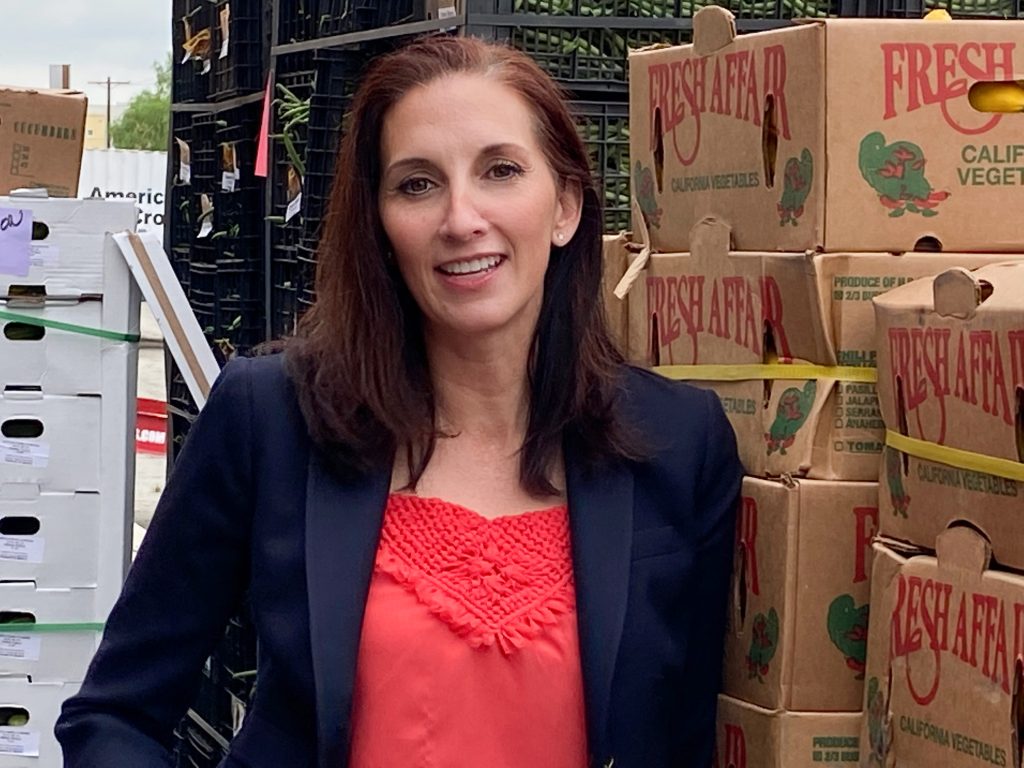
Do you have certain entities that you want to give a shout-out for particularly good efforts?
All of the food banks that we work with are incredible. The Sacramento Food Bank, the Yolo Food Bank, everybody. Our food banks oftentimes have more mouths to feed than they have resources to feed them. So they are always here and they are incredibly creative at problem-solving. They ask, ‘How do we work with our local grocers, our restaurants, our retailers, our farmers to prevent that food from ever going bad? And how do we get it out into the community in a way that is maximizes its value and maximizes its benefit?’
The timing of our grant program was really critical when the pandemic hit and so many people suddenly found themselves in a food-insecurity position. Many of our food banks came to us and said, ‘If we could just get another truck we could feed thousands more people every day.’
So we said, ‘We have $3.5 million, let’s start buying some trucks. Let’s buy refrigerated trucks. Let’s buy you a refrigerator. Let’s do this.’ The benefits will be realized for years to come from that one investment. That’s why I’m incredibly proud of this team.
When it came to the SB 1383 mandate, it wasn’t just simply an aspect of the law that we were implementing. It was how do we do this in partnership with our local communities, in partnership with our local government, and in partnership with the people who are actually going to be able to make the difference. I know you can hear the enthusiasm in my voice, but holy cow! When I got into government 26 years ago, I never knew I was going to have the ability to make that kind of impact.
With that said, when we talked to the food banks, the challenges are going from tier one, which is the major generators with a significant amount of food that you can collect, to tier two, which is this whole other level of generators that have much smaller amounts of food to collect. How can we make that economically feasible?
First, I want to recognize that, yes, this is challenging. Tier one is large food businesses like supermarkets donating unsold food and tier two is food businesses (like restaurants) donating mostly prepared food—and it’s all challenging because it’s brand new. We recognize that challenge, and again, having implemented tier one, we saw those challenges. I have every faith that if people come to the table willing to roll up their sleeves, they will be able to consistently implement this legislation.
Californians throw away 2.5 billion meals of still fresh and edible food every year. This gets to the importance of tier two, right?
It’s little changes in our lifestyle that result in not throwing those meals away. We recognize that for hotels, restaurants, larger venues and cafeterias, this is a slightly different way of conducting business. But it was a slightly different way for our grocers to conduct business in tier one. If you go to Raley’s, if you go to Safeway, if you go to Nugget, they all have unsold food donation programs in place today.
For me, in the newspaper business, we’d send a driver in to drop off papers. They could put 200 papers in certain places, 25 papers in other routes. So the cost difference was basically the same of putting in 200 papers or 25. That’s the concern I think a lot have with tier two. They like it, but is it going to be cost-effective?
So to your point, same truck driver, 200 papers or 25 papers. But if you’re delivering something other than just the 25 newspapers, maybe it becomes more cost-effective?
These are the kinds of challenges we’re going to have to work through. To go back to the purpose of this legislation, we have to reduce what we’re throwing away. We have to change what we’re doing. Part of this will be on the front end, just thinking about how much food we are purchasing and preparing. And how much are we throwing away. Can we do business in a way that creates less waste in the first place?
We’re producing educational documents for our retail partners and webinars where we can do peer-to-peer advice. It is, again, a slight shift in the way we think about how we conduct our day-to-day business, how we consume, that will make a huge difference.
I never want to underestimate the cost impact on restaurants, on hotels, etc. They’ve gone through a really difficult period, with the pandemic and the economic impact we’re feeling to this day. I’m not discounting that at all. What I’m saying is that I think there are still areas where we can make improvements that are truly cost-effective.
The first recommendation of the Little Hoover commission was on education—they were saying that it’s a priority to get people involved in understanding. Do you want to comment on that?
Absolutely—I 100% agree. We should be talking, we should be communicating, we should be educating, we should be helping people understand better. Again, having been a legislative consultant, the more information people have, the better decisions they make.
The challenge in the recycling world is that there is only so much that can be done at the state level, because each local program looks different based on the programs local governments choose to implement for their constituents. Here in Sacramento and Yolo counties, they rolled out their program last year at the beginning of the year and the city of Sacramento rolled it out in July.
We ran a statewide education and outreach campaign in 2022 and the beginning of 2023 in every community that told us they had organics collection. We have provided educational tools and training on how to use them to all of our local governments. We have a website iRecycleSmart.com, where we send people who ask, ‘What do I do with organics? How do I recycle this plastic bottle?’ I’m working on another statewide educational campaign around 1383, but we haven’t launched it yet because we wanted to give some local governments more opportunity to get their programs in place.
Is there anything else you wanted to say about 1383?
My husband noted that I was tossing and turning a lot last night. He said, ‘You didn’t sleep last night.’ I said, no, I didn’t, because I really want to emphasize the importance of not just our organics program but meeting our short-lived climate pollutant goals and actually saving this planet. We’ve faced two droughts in 10 years, fires and now floods. We have to work together to fight climate change in every way we can.
I think that every single Californian can do their part. By just taking that banana peel, that watermelon rind, those chicken bones, and moving them from your trash can to your organic waste, you’re making a huge difference for our planet. And the next generations are absolutely relying on us taking this seriously, taking it seriously today, and doing our part today.
Organics recycling is actually the fastest and easiest thing that we can do as individuals, communities, and as a state to change the world. It is so important and I think that has not been a big enough part of the dialogue out there.
Exactly. I think we have to treat this more like a social movement as opposed to government regulations to make it happen.
Again, to my sleepless night, I’m just absolutely floored that anybody thinks we have any time to waste. That we could possibly delay another day is not an acknowledgment of the reality of the science. And that’s way too dire for people to want to talk about.
But it is dire and needs to be taken seriously. Not everybody’s going to be able to go out and buy an electric vehicle tomorrow. Everybody can throw their organic waste in the green bin.

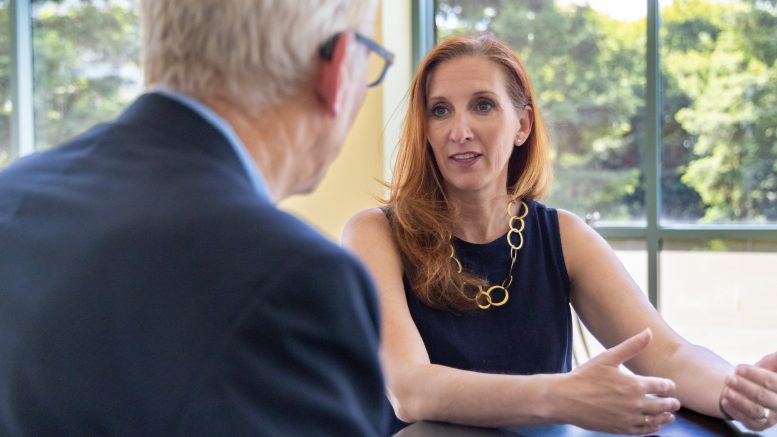
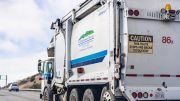

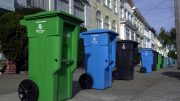
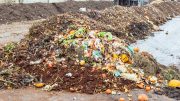
Be the first to comment on "Q&A with Rachel Machi Wagoner of CalRecycle on the intricacies of SB 1383"